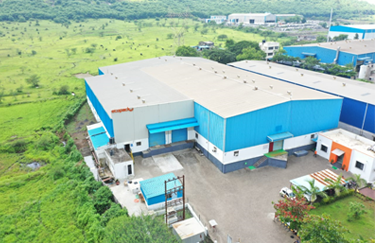Different Harmful Types of Plastic Used in Packaging

Plastic packaging has become an inseparable part of our daily lives, but its detrimental impact on the environment is a growing concern. In India, the statistics are alarming. According to recent reports, the country generates over 26,000 tonnes of plastic waste every day, of which only a fraction is recycled. This excessive use of plastic in packaging has led to pollution of land, water bodies, and even the air we breathe. It’s high time we explore sustainable packaging alternatives to reduce the harmful effects of plastic, such as eco-friendly baking moulds and paper packaging.
How is Plastic Made and Why Isn't It Biodegradable?
Plastic is created through a complex process involving the extraction and refinement of fossil fuels, such as crude oil. It undergoes polymerization, resulting in the formation of long chains of identical molecules known as polymers. These polymers give plastic its durable and versatile properties, making it an attractive choice for packaging materials. However, the durability that makes plastic so useful is also what makes it harmful to the environment. Most conventional plastics are not biodegradable, meaning they cannot be broken down naturally by bacteria or other microorganisms. Instead, they persist in the environment for hundreds of years, causing severe ecological damage. Plastics do not come under sustainable packaging.
Plastics Types Used in Packaging and Their Environmental Impact
Polyethylene Terephthalate (PET): PET is commonly used plastic type for water bottles, food containers, and various forms of packaging. Although it is 100% recyclable, PET can take up to 450 years to decompose. Improper disposal leads to the accumulation of PET waste in oceans, posing a threat to marine life.
High-Density Polyethylene (HDPE): HDPE plastic type is used for milk jugs, shampoo bottles, and grocery bags. While it is recyclable, it can still take hundreds of years to break down. Improper recycling and littering of HDPE contribute to land and water pollution.
Polyvinyl Chloride (PVC): PVC plastic type is found in blister packaging, cling film, and some plastic bottles. It contains harmful additives, such as phthalates and lead, which pose health risks. When incinerated, PVC releases toxic pollutants into the air.
Low-Density Polyethylene (LDPE): LDPE plastic type is commonly used in grocery bags, shrink wraps, and squeeze bottles. It is not easily recyclable and takes hundreds of years to degrade. LDPE waste clogs drainage systems, leading to flooding and environmental damage.
Laws around Plastic Use in India
Recognizing the urgency to curb plastic pollution, the Government of India has implemented various measures to regulate plastic usage:
Plastic Waste Management Rules (2022): These rules focus on extended producer responsibility, promoting recycling, and reducing single-use plastic.
Ban on Single-Use Plastics: India banned the use of single-use plastics, including carry bags, cutlery, and disposable items from July 2022
How Can Paper Bags Help?

When we think of plastic bag alternatives, paper packaging comes up as the most sustainable packaging method. Made from renewable resources like trees, they have a significantly lower environmental impact. Here are some advantages of paper bags:
Biodegradability: Paper bags decompose naturally within a few months, reducing their impact on the environment.
Recyclability: Paper bags are easily recyclable, promoting a circular economy and reducing the demand for new materials.
Renewable Resource: Trees used to make paper can be sustainably grown and harvested, ensuring a constant supply.
Reduced Pollution: Paper bags do not emit harmful toxins when incinerated and are less likely to end up in oceans and landfills.
Companies Transitioning from Plastic to Sustainable Packaging
In response to the growing concern for the environment, companies across industries are embracing sustainable packaging alternatives. They are shifting from plastic to eco-friendly products like paper bags and compostable materials. Some companies are even adopting innovative materials made from plant fibres, such as sustainable baking moulds, which provide a greener solution without compromising functionality.
Ecopack can help you in this transition by providing you with quality paper bags. Our paper bags are durable, made from food-grade paper, grease-proof and ideal for restaurants and food joints.
Conclusion
The harmful effects of plastic packaging on the environment cannot be ignored. It’s imperative for individuals, businesses, and governments to take collective action to reduce plastic waste and adopt sustainable packaging. Paper bags and eco-friendly packaging solutions, like sustainable baking moulds, offer a viable path towards a greener future. By making conscious choices and supporting sustainable practices, we can protect our planet and ensure a healthier future for generations to come. Let us embrace change and work together for a plastic-free world!
If you’re thinking where you can find paper bags near me, open Ecopack’s website and start ordering!
QUICK LINKS
PRODUCTS
CUSTOMER CARE
For any information send an email to our Customer Service or contact us via social networks.
info_india@ecopack.com hr@ecopack.comDownload App
© 2023 ECOPACK INDIA PAPER CUP PVT. LTD.


